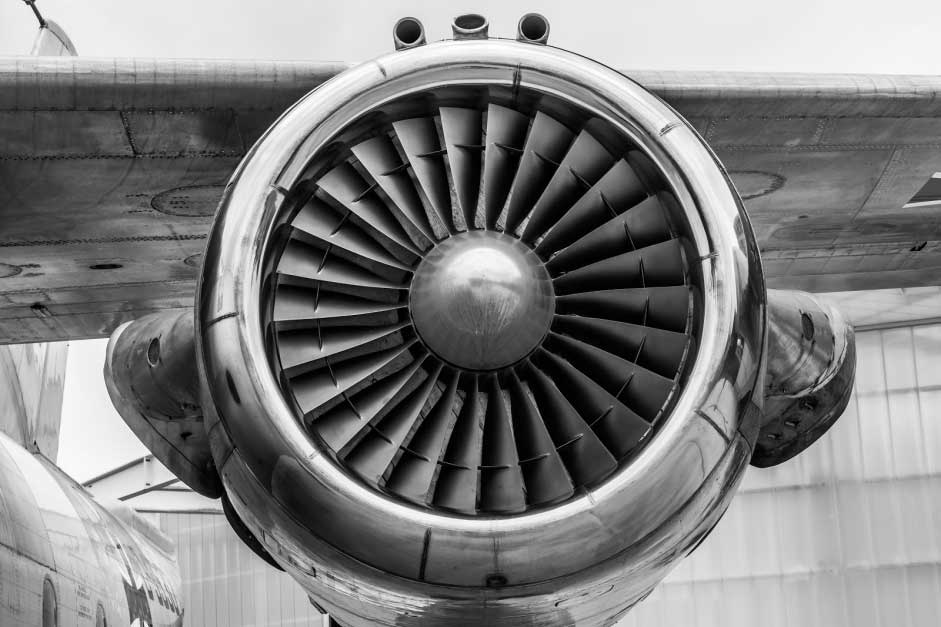During the years of the Berlin Wall, air traffic to West Berlin ran via three fixed air corridors. Hamburg (northwest), Bückeburg (west) and Frankfurt (southwest).

German planes were not allowed to fly to West Berlin, so passengers only had the choice between the airlines of the three Western Allied nations. The American “PAN AM”, the French “Air France” and the British “British Airways” were the most common airlines.
Only the Polish “LOT” was allowed to use the corridors as a non-allied airline from Schönefeld.
The three corridors were each 20 miles / 32 km wide and aircraft were not allowed to leave them.
All flights had to be reported at least two hours in advance at the Berlin Air Safety Center, or “BASC” for short. The application had to be approved by representatives of all four powers, if one of them did not agree, a note was added to the flight safety card; “Safety of flight not guaranteed”, which was mostly done by the Soviet side.
Until the opening of Tegel, Tempelhof was the only airport also used by civilians. Gatow Airport was only used by the “RAF”.
During the construction work on the runways at Tegel Airport around 1975, “PAN AM” and “British Airways” only flew to Tegel Airport in exceptional cases.
This was also the case on 16 November 1966, when PAN AM aircraft flew passengers during the day and mail at night.
A Boeing 727 had flown from Tegel to Frankfurt with mail freight and then returned to the GDR with the new cargo from West Germany. Expected arrival: 02:55 hrs.
The crew of PAN AM 708, Flight Captain Walter T. Reavis, 51, Copilot Raymond B. Foppe, 52, and Flight Engineer John W. Charlton, 34, were considered experienced, but due to bad weather: visibility 2.6 kilometres, light snowfall, cloud base at 160 metres, lower in places, they did not make it.
At 2:41 a.m. there was the last radio contact, immediately afterwards the aircraft disappeared from the radar screen of the air traffic control: about 15 kilometres from Tegel airport. The aircraft had hit the ground at a speed of between 250 and 300 km/h, with the landing gear already extended.
Ten hours later, the Soviets officially informed the Americans of the crash; the death of the crew was not confirmed until the evening. The Soviets did not allow anyone from the West access to the widely cordoned-off crash site. They cleaned up the site themselves, recovered the dead and the remaining mailbags. They handed everything over to the Staaken checkpoint on 17 November 1966. But only a little more than half of the plane debris was handed over. Specifically, the flight recorder and the voice recorder were missing, as well as the tailplane and vertical stabiliser. A common practice at the time: when a Soviet interceptor had crashed into the Spandauer Stößensee months before, the British had kept it similar.
German planes were not allowed to fly to West Berlin, so passengers only had the choice between the airlines of the three Western Allied nations. The American “PAN AM”, the French “Air France” and the British “British Airways” were the most common airlines.
Only the Polish “LOT” was allowed to use the corridors as a non-allied airline from Schönefeld.
The three corridors were each 20 miles / 32 km wide and aircraft were not allowed to leave them.
All flights had to be reported at least two hours in advance at the Berlin Air Safety Center, or “BASC” for short. The application had to be approved by representatives of all four powers, if one of them did not agree, a note was added to the flight safety card; “Safety of flight not guaranteed”, which was mostly done by the Soviet side.
Until the opening of Tegel, Tempelhof was the only airport also used by civilians. Gatow Airport was only used by the “RAF”.
During the construction work on the runways at Tegel Airport around 1975, “PAN AM” and “British Airways” only flew to Tegel Airport in exceptional cases.
This was also the case on 16 November 1966, when PAN AM aircraft flew passengers during the day and mail at night.
A Boeing 727 had flown from Tegel to Frankfurt with mail freight and then returned to the GDR with the new cargo from West Germany. Expected arrival: 02:55 hrs.
The crew of PAN AM 708, Flight Captain Walter T. Reavis, 51, Copilot Raymond B. Foppe, 52, and Flight Engineer John W. Charlton, 34, were considered experienced, but due to bad weather: visibility 2.6 kilometres, light snowfall, cloud base at 160 metres, lower in places, they did not make it.
At 2:41 a.m. there was the last radio contact, immediately afterwards the aircraft disappeared from the radar screen of the air traffic control: about 15 kilometres from Tegel airport. The aircraft had hit the ground at a speed of between 250 and 300 km/h, with the landing gear already extended.
Ten hours later, the Soviets officially informed the Americans of the crash; the death of the crew was not confirmed until the evening. The Soviets did not allow anyone from the West access to the widely cordoned-off crash site. They cleaned up the site themselves, recovered the dead and the remaining mailbags. They handed everything over to the Staaken checkpoint on 17 November 1966. But only a little more than half of the plane debris was handed over. Specifically, the flight recorder and the voice recorder were missing, as well as the tailplane and vertical stabiliser. A common practice at the time: when a Soviet interceptor had crashed into the Spandauer Stößensee months before, the British had kept it similar.
Immediately the rumour mill was boiling. West Berlin newspapers speculated that flight 708 had been shot down.
It was an open secret that the “PAN AM” worked closely with the CIA.
A number of their aircraft had lockable camera ports and retractable antennas, often flying courses that allowed them to fly out of the designated corridors for some time.
The Soviet Union responded with fighter planes firing warning shots to push the planes away from Soviet bases. US comedian Bob Hope, after a visit to Berlin, said the route to Berlin was well lit, with tracer ammunition all around the planes.
US authorities denied a shootdown. There was no evidence of an explosion or bullet damage on the wreckage, according to the US report.
The aircraft would not have completed its descent at the instructed altitude and had peeled off against the 63-metre high old Mühlenberg, about three kilometres southeast of Döberitz airfield.
In the book “Flugplatz Döberitz” by Kai Biermann and Erhard Cielewicz (Ch. Links Verlag, Berlin 2005), the assumption was made that radar installations of the Soviet anti-aircraft defence in nearby Elstal could have interfered with the radio guidance beam and thus caused the crash. However, they overlook the fact that this would not have affected (switched off) the altimeter.
In the explanation given by the FAA, the error was in the calibration of the altimeter. Frankfurt is 100m above sea level, Tegel only 37m. The NTSB acknowledged the possibility as an error, but did not make a final judgement.
PROBABLE CAUSE: “The descent of the flight below its altitude clearance limit, but the Board has been unable to determine the cause of such descent”.
But to this day, former “PAN AM” employees living in Berlin report that the plane was shot down.


